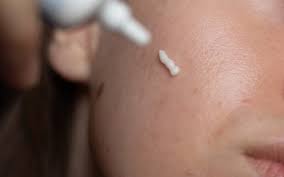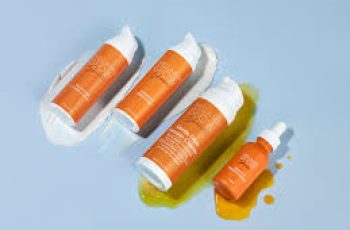
Can I Use Niacinamide with Tretinoin? A Complete Guide
Tretinoin and niacinamide are two of the most celebrated ingredients in skincare today. They’re known for their impressive ability to improve skin health, texture, and appearance.
Despite their somewhat complex names, both are actually common in many skincare products.
Because of their popularity, many people wonder: Can I use niacinamide with tretinoin? If you’re curious about how to combine these ingredients safely and effectively, you’re in the right place.
This guide answers your top questions about using niacinamide and tretinoin together.
Can I Use Niacinamide While Using Tretinoin?
Yes, you absolutely can! In fact, many skincare enthusiasts recommend using these two ingredients in tandem for maximum skin benefits.
However, they’re often best used at different times of the day to avoid irritation.
A popular approach is to apply niacinamide in the morning and tretinoin at night. This helps you get the full benefit of both without overwhelming your skin.
When applying niacinamide, do so on freshly cleansed skin, ideally while it’s still slightly damp. This enhances its ability to draw moisture into your skin, thanks to its humectant properties.
Tretinoin, on the other hand, is a powerful derivative of vitamin A. It’s known for reducing fine lines, wrinkles, and acne. However, it can make your skin more sensitive to sunlight.
That’s why applying tretinoin in the evening and following up with a broad-spectrum SPF 30+ during the day is essential.
Using tretinoin at night reduces the risk of UV damage and allows the ingredient to work uninterrupted during your skin’s natural repair cycle.
Why You Might Not Find Both Ingredients in One Product
You may have noticed it’s rare to find a single product combining both niacinamide and tretinoin.
This is mainly because tretinoin is a prescription ingredient in many countries, which limits its availability in over-the-counter products.
If you want to use both, it’s safest to use separate products.
And as always, if you have any concerns about combining ingredients or skin sensitivity, it’s wise to consult a dermatologist or healthcare professional.
What About Retinol and Niacinamide?
Retinol is often compared to tretinoin since both come from the vitamin A family.
The main difference is tretinoin is a more potent, prescription-strength retinoid, while retinol is a gentler, over-the-counter alternative.
You can absolutely use retinol and niacinamide together. To get the best results, apply niacinamide first to slightly damp skin. This locks in moisture and helps your skin barrier stay healthy.
Next, follow with retinol. A well-moisturized skin barrier helps retinol absorb better into the deeper skin layers, making it more effective.
Using niacinamide first can also reduce the dryness and irritation that retinol sometimes causes. This combo is great for people new to retinoids or those with sensitive skin.
Should I Apply Moisturizer Before or After Tretinoin?
Moisturizer always comes last in your skincare routine. After cleansing and applying treatments like tretinoin, a moisturizer helps lock in hydration and soothe the skin.
The general rule of thumb for skincare application is to start with the thinnest product consistency and finish with the thickest.
Since tretinoin tends to be lightweight and a moisturizer heavier, apply tretinoin first, then moisturize.
Some people find applying moisturizer immediately after tretinoin helps reduce irritation. Others prefer to wait 15–20 minutes before moisturizing to let tretinoin absorb fully.
Try both and see what your skin prefers.
What Products Should I Avoid When Using Tretinoin?
Tretinoin is powerful but can make skin more sensitive and prone to irritation. Certain products may worsen this if used together. Here are three product types to avoid while using tretinoin:
1. Astringents and Toners
These often contain alcohol or other drying agents. Since tretinoin already causes dryness, combining it with astringents can strip natural oils and worsen skin dryness or cause flare-ups.
2. Chemical Exfoliants (AHAs and BHAs)
Glycolic acid, lactic acid, and salicylic acid exfoliate dead skin cells on the surface. Tretinoin speeds up skin cell turnover.
Using both simultaneously can lead to over-exfoliation, causing redness, peeling, or irritation.
3. Benzoyl Peroxide
This ingredient fights acne similarly to tretinoin but is very harsh. Using both together can overly dry and irritate skin, potentially reducing the effectiveness of each.
In general, always introduce new products slowly and monitor how your skin reacts. When in doubt, consult a dermatologist.
Can I Use Tretinoin Every Night?
Technically, yes, you can use tretinoin every night, but this depends on your skin’s tolerance and the formula’s strength.
Many find that starting with every other night allows their skin to adjust and reduces dryness and peeling.
If you have sensitive skin or are new to tretinoin, gradual introduction is key. Follow product instructions closely and don’t hesitate to pause or reduce frequency if irritation occurs.
Consistent, gentle use yields the best results over time without compromising your skin’s health.
Does Niacinamide Cause Purging?
No, niacinamide does not cause purging. Purging happens when ingredients speed up skin cell turnover, bringing underlying breakouts to the surface.
Niacinamide works differently—it helps soothe, hydrate, and strengthen the skin barrier.
That said, some people may have rare negative reactions to niacinamide, such as redness or irritation. Always patch test new products and observe your skin’s response.
Is Tretinoin the Same as Retinol?
They’re related but not the same. Tretinoin is the active form of retinoic acid and is prescription-only in many places.
Retinol, found in many over-the-counter products, is converted by your skin into retinoic acid.
Both offer similar benefits like reducing wrinkles, improving texture, and fighting acne. However, tretinoin tends to work faster and more effectively but with a higher risk of irritation.
If you’re new to vitamin A derivatives, retinol is a gentler starting point.
Final Thoughts
Using niacinamide and tretinoin together is a fantastic way to support your skin’s health and appearance.
Alternate their use—niacinamide in the morning and tretinoin at night—for best results and fewer side effects.
Avoid harsh or drying products when using tretinoin, introduce all active ingredients slowly, and protect your skin with daily SPF.
If you have more questions or want personalized advice, consulting a dermatologist is always the safest route.
For ongoing skincare tips, follow our Instagram page and join our community of skin lovers!


